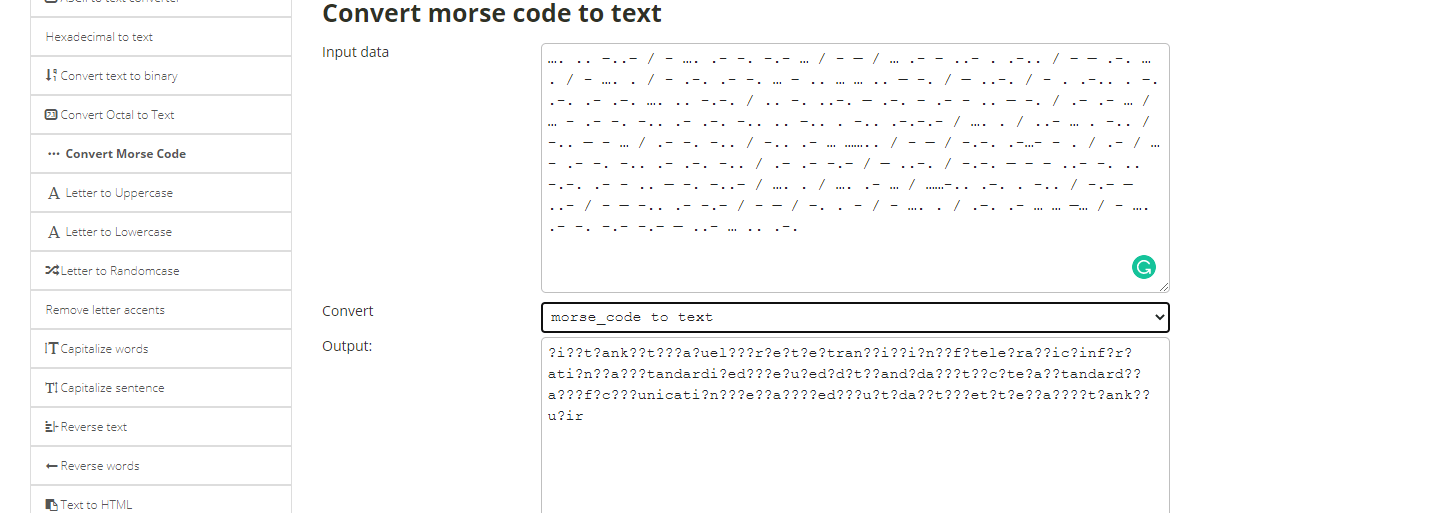“Defend The Web” Write-Up (Crypt 3 / Crypt)
Defend the Web – (Crypt 3 / Crypt – decoding morse code)
This challenge is a little bit interesting. The developers gave us a clue, which is an encrypted text message that incorporates the password for the login page. Our job is to decrypt the message and retrieve the password.
The quickest way to identify the encryption type of the message is to use a Google search engine. Copy the code and paste it in the search bar and hit “Enter”. Google will not decrypt it for you, but at least it will guess what type of encryption it might be.

Looks like we are dealing with a Morse code. Copy the code and try to decrypt it in any online Morse code converter.

Paste the code in the “Input data” field and change the “Converter” to “morse_code to text”.

As you can see, it was able to convert the Morse code, but there is a small problem. Looks like some of the characters are converted as “?”. It is because the dots were not formatted properly, they should have spaces in between. The “…” dots need to be replaced with “. . .”, the large “ — “ dashes need to be replaced with three “ —“ dashes. Let’s try to replace them and see what we will end up with.

After correcting the Morse code a little bit, we can see that it is almost readable. If you want you can work some more and make it fully readable, but for this example, we can easily guess what the password is. It is “thankyousir”. Use this passphrase on the login page to pass the challenge.

Morse code is a telegraphic communication system that uses standardized sequences of short and long elements to represent letters, numbers, punctuation, and special characters. In on-off keying, the short and long elements are known as “dots” and “dashes” or “dits” and “dahs,” and can be formed by sounds, marks, or pulses.
Morse code was first transmitted as electrical pulses along a telegraph wire, but it is now also transmitted as an audio tone, a radio signal with short and long tones, or a mechanical or visual signal (for example, a flashing light) using devices such as an Aldis lamp or a heliograph. Because Morse code only has two states (on and off), it was an early form of digital code. However, because the pause lengths are required to decode the information, it is not technically binary.
